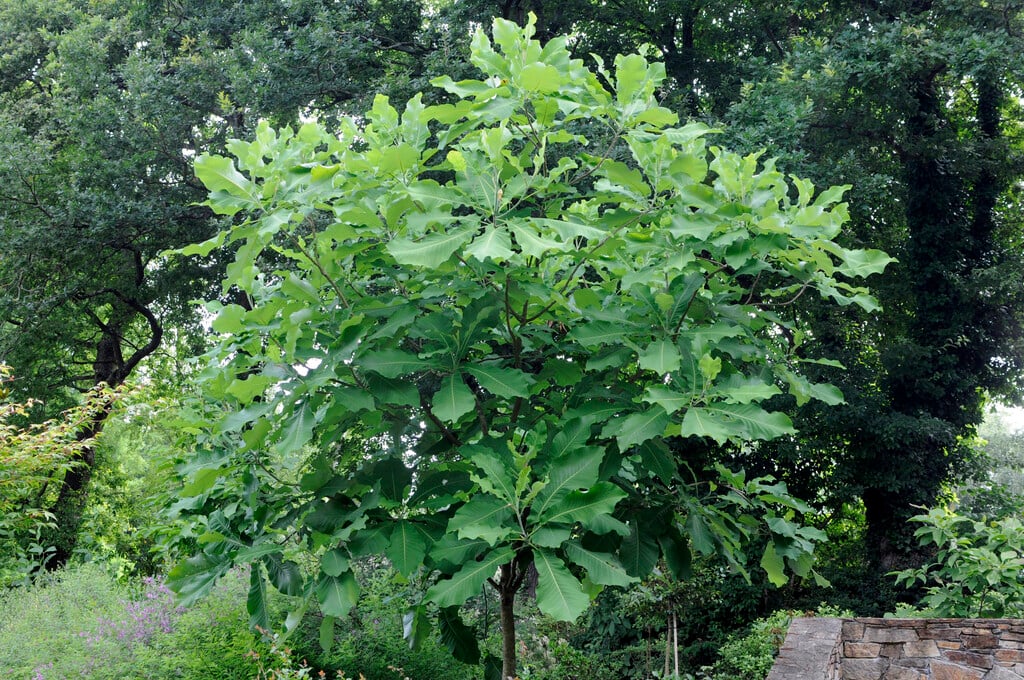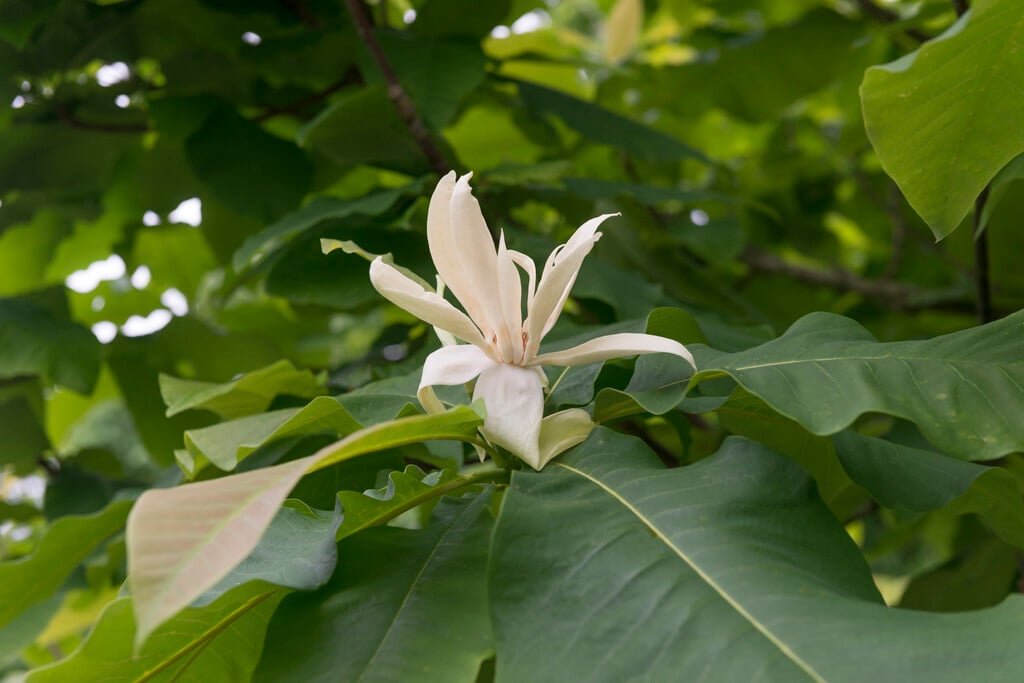Magnolia tripetala
umbrella tree
A broadly conical, deciduous tree to 10m tall with obovate to inversely lance-shaped, dark green leaves to 60cm long clustered at the shoot ends. The cup-shaped, creamy-white, strongly pungent flowers, 15cm or more across are produced in late spring to early summer
Size
Ultimate height
8–12 metresTime to ultimate height
20–50 yearsUltimate spread
Wider than 8 metresGrowing conditions
Moisture
Moist but well–drained, Well–drainedpH
Acid, NeutralColour & scent
| Stem | Flower | Foliage | Fruit | |
| Spring | White | Green | ||
|---|---|---|---|---|
| Summer | White | Green | ||
| Autumn | Green | |||
| Winter |
Position
- Full sun
- Partial shade
Aspect
East–facing or South–facing or West–facing
Exposure
Sheltered Hardiness
H6Botanical details
- Family
- Magnoliaceae
- Native to GB / Ireland
- No
- Foliage
- Deciduous
- Habit
- Spreading branched
- Genus
Magnolia can be deciduous or evergreen trees or shrubs, with large, showy, often fragrant flowers, often opening before the leaves, and sometimes followed by colourful cone-like fruit
- Name status
Correct
- Plant range
- Eastern USA
How to grow
Cultivation
Grow in moist but well drained neutral to acid soil in full sun or light shade with shelter from cold winds. Late frost may damage the leaves and flower buds. For more information see magnolia cultivation advice
Propagation
Propagate by seed or semi-ripe cuttings
Suggested planting locations and garden types
- Architectural
- Cottage and informal garden
- Low Maintenance
Pruning
Pruning Group 1. See magnolia pruning
Pests
May be susceptible to scale insects, horse chestnut scale and capsid bug
Diseases
May be susceptible to coral spot, phytophthora, grey moulds, honey fungus, a virus or fungal leaf spot
Get involved
The Royal Horticultural Society is the UK’s leading gardening charity. We aim to enrich everyone’s life through plants, and make the UK a greener and more beautiful place.

